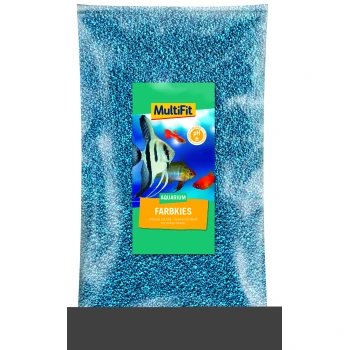Aquarium substrate
Aquarium flooring in the Maxi Zoo online shop
Aquarium flooring: landscape of sand and gravel
Sand or gravel on the bottom of the aquarium, together with water plants and decorations, create a beautiful overall look. The aquarium flooring also fulfils the special requirements of the ecosystem: it supports the plants, serves as a habitat for many useful bacteria and contributes to the well-being of the fish. The animals keep busy with the aquatic background by rummaging through it to look for food. It serves their orientation and as camouflage for them and lowers their stress level whilst imitating a safe environment. The floor also fulfils a filter function in the natural habitat and ensures that the bacteria that are important for the quality of the water can form.
Which material is suitable as a floor?
Aquarium flooring is predominantly natural gravel and aquarium sand. Fine coral sand is suitable for seawater aquariums. In addition, floor materials are available for special aquariums, including shrimp gravel for keeping small crustaceans. Some species, such as the popular tank weed and kuhli loach, absolutely need a very fine substrate in which they can forage and dig. Pebbles are available in different grains and shades, so you have no creative limits when decorating the aquarium floor. Furthermore, there are special plant substrates mixed with gravel, which supply nutrients to the water plants as the lowest floor layer. In our online shop you can get aquarium gravel and sand.
How deep should the flooring in the tank be?
The depth of the flooring depends on the type of plants: plants with strong roots require a planting depth of at least eight centimetres. Ideally, you will fill the flooring so that it rises towards the rear wall of the aquarium. The higher layer of aquarium floor in the back offers the plants used there more space for their roots, any dirt that occurs slides forward down the slope, where it can be quickly found and easily removed. At the lowest point in the foreground, the filling height of the aquatic gravel should still be at least five centimetres.
How often do you change the flooring?
The flooring in a well-adjusted, well-maintained aquarium has a very long shelf life. Even if there is excessive algae infestation or if serious soiling occurs for any other reason, you can use the aquarium gravel for several years, as it does not wear out. Thorough cleaning of the flooring is necessary. The aquarium flooring should be changed if it has too much organic material or you notice an increasing infestation of the fish with parasites, which will accumulate in the flooring.
